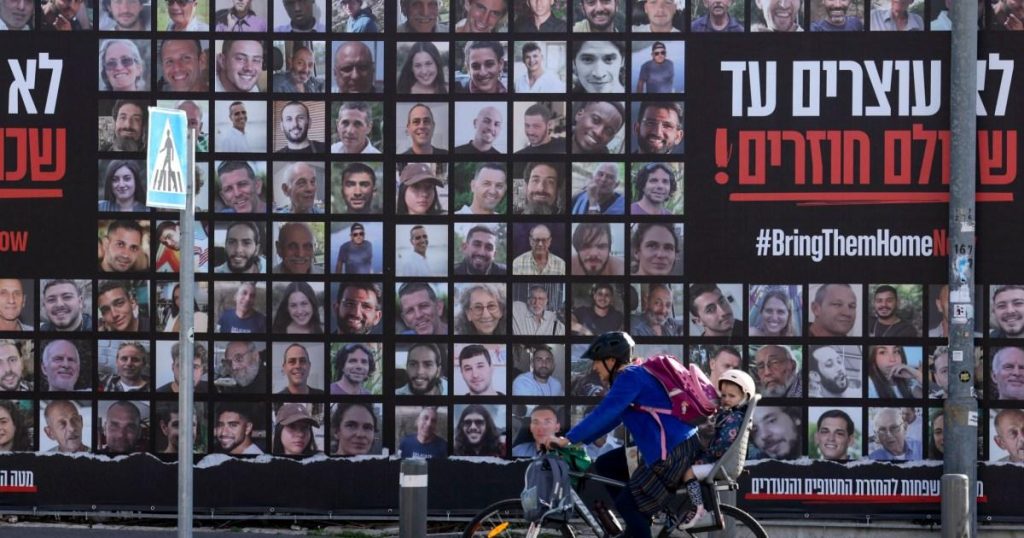The protracted conflict between Israel and Hamas, spanning over fifteen harrowing months, has inflicted immense suffering on both sides, claiming over 66,000 Palestinian and 1,200 Israeli lives. Beyond the staggering death toll, the conflict has been marked by the capture and detention of numerous hostages, predominantly by Hamas. These captives, trapped amidst the relentless bombardment of Gaza, represent not only a tragic consequence of war but also a glimmer of hope for their families, who desperately await their return. The recent ceasefire agreement, brokered by the United States and Qatar, offers a potential avenue for their release, transforming the political milestone into a deeply personal lifeline.
The October 7, 2023 attack by Hamas on southern Israel initiated this hostage crisis, resulting in the abduction of approximately 250 individuals alongside the tragic loss of 1,200 lives. While a brief ceasefire in the initial weeks of the conflict secured the freedom of over 100 hostages, a significant number remained captive. Current estimates suggest Hamas holds 97 individuals, with a grim assessment indicating at least 35 have perished. This captive population comprises 84 men and 13 women, including two children under the age of five, reflecting the indiscriminate nature of the initial attack. The toll also includes foreign nationals, with one Tanzanian and two Thai citizens among the deceased. Tragically, at least three hostages lost their lives during Israeli Defense Forces (IDF) operations in Gaza, adding another layer of complexity to the already dire situation.
The conditions endured by the hostages mirror the hardships faced by countless Palestinians in the besieged territory. Confined to apartments or Hamas’s intricate network of underground tunnels, these captives face cramped, damp, and stifling conditions, according to testimonies from those fortunate enough to be released. The scarcity of food, coupled with the constant threat of Israeli airstrikes and tank fire, creates a pervasive atmosphere of fear and uncertainty. For the families of those still held captive, the lack of information regarding their loved ones’ well-being exacerbates their anguish, leaving them clinging to hope amidst the devastating backdrop of war.
The recently negotiated ceasefire agreement between Israel and Hamas offers a beacon of hope for the hostages and their families. A key provision of the agreement mandates the phased release of 33 Israeli hostages, prioritizing women, children, and men over 50 years of age. This group includes both soldiers and civilians captured during the initial offensive. The release is structured to unfold over a six-week period, with a minimum of three hostages freed each week. Critically, the agreement stipulates the prioritization of surviving hostages, followed by the repatriation of the remains of those who perished in captivity.
The successful implementation of this crucial aspect of the ceasefire agreement hinges on the commitment and oversight of international guarantors, namely Qatar, Egypt, and the United States. Their involvement is essential not only for ensuring adherence to the agreed-upon timeline but also for fostering trust between the warring parties. The release of these hostages represents not just a humanitarian imperative but also a significant step towards de-escalation and the potential for more substantial peace talks in the future.
The devastation wrought by the 15-month conflict is almost unimaginable, with an estimated 70% of the Gaza Strip lying in ruins. The ceasefire, while fragile, offers a respite from the relentless violence and a platform for addressing the complex issues underlying the conflict. The release of the hostages, though representing only a fraction of the overall human cost of the war, holds immense symbolic significance. It is a testament to the power of negotiation and a reminder of the shared humanity that can emerge even amidst the most bitter of conflicts. For the families awaiting the return of their loved ones, it is a moment of profound relief and a testament to the enduring power of hope in the face of unimaginable adversity.




